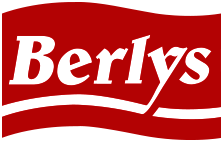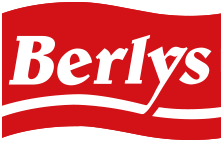 Tailor made suggestions for your business
Tailor made suggestions for your business

- Your environment is increasingly dynamic and changing.
- Your competitiveness is ever stronger and proactive.
- Your consumer is increasingly demanding, expectations harder to meet.
- Most buying decisions are made at the sales point.

Efficient management is the key
Measurement indicators
The routine of daily work at a sales outlet takes up the whole time, leaving hardly a moment to sit down and analyse the range, sales trends, or to hold meetings with the team or suggest actions to be taken to energise results.- Sales/day
- Nº of visits/day, in this sector almost always the same as the No. of receipts/ day, in other words virtually everyone who comes into the shop buys something.
- Ticket Average receipts = sales/No. of receipts
- Nº of articles/receipts
- Now it is important to introduce actions which help us to improve those indicators in a given period of time (a day, a week, a month) and of course to monitor their evolution.

Product recommendations
Know the key points in the elaboration, manipulation and finishing of the products.The seven key points of Bakery, Pastry and Patisserie
- The Tray
- All cream-filled products combine well with decoration based on toasted almond, dices or strips.
- If your products are chocolate-filled, try decorating them with chips, noodles, strips or filigree.
- Use grain or icing sugar in products with sweet fillings.
- For savoury pastries, it is best to decorate with seeds prior to baking so as not to use gelatine which is sugar-based.
- Thawing
Once the product is placed on the trays, allow it to flaw completely before cooking or fermentation. Cooking the product when frozen produces so-called thermal shock, with the result that the pieces are not so crisp and are crude in the middle. - Fermentation
Fermentation usually takes place in special chambers with 75 /80% humidity and at a temperature of 27/30ºC. Take particular care when placing items on the tray because they increase in volume during the process. If a proving chamber is not available, do this at room temperature, protecting the product from air currents and spraying the surface of the pieces with water. - Before baking
Any pastries which, because of their composition, cannot be decorated after baking (pies, savoury napolitanas …) should be decorated ahead. Add seeds and spray individual savoury items with water or egg before they go into the oven. This enables you to differentiate sweet pieces whose formats are similar. - Cooking
Observe all parameters for thawing, proving, temperatures and baking times. Pre-heat the oven and keep it above baking temperature to avoid dropping below that level when opening the door to put the cold trays in. - Standing
Let pastry rest before decorating it, to prevent humidity from condensing inside. For breadmaking, standing on the tray avoids flattening which occurs when items are superimposed when taken from the oven. This enhances the products’ crust and the crisp effect. - Decoration
Use neutral gelatine when adding decoration to the pastry so as not to alter its original flavour:- Use neutral gelatine when adding decoration to the pastry so as not to alter its original flavour:
- All cream-filled products combine well with decoration based on toasted almond, dices or strips.
- If your products are chocolate-filled, try decorating them with chips, noodles, strips or filigree.
- Use grain or icing sugar in products with sweet fillings.
- For savoury pastries, it is best to decorate with seeds prior to baking so as not to use gelatine which is sugar-based.
Types of dough in Bakery

Baguette
leer más
Chapata
leer más
Bastón
leer más
Gallega
leer más
Campesina
leer más
Payesa
leer másBaguette
A soft bread, with a fine crust, golden, and spongy crumb; a very pleasant aroma and flavour combining perfectly with all types of dishes and food.
Chapata
(ciabatta) A rectangular bread with a consistent crust and darker crumb, large, uneven alveolate, made in a long process of fermentation and stone-baked pre-cooking.
Bastón
A bread responding to the latest market tendencies, long, narrow, rustic in appearance. Its floured crust is finer and crisper than the traditional ciabatta because of its consistent crumb and less alveolate.
Gallega
This bread has a soft and crispy crust, pointed ends and two floured top cut. Its alveolate crumb, unmistakeable flavour and good conservation continue to convince consumers, who have made it one of the most sought-after regional breads.
Campesina
An elongated rustic variety with an attractive, floured crust crossed by shallow top cuts. Its spongy crumb always remains fresh because of the double fermentation of the production process. An ideal bread to maintain and care for health, the first variety with iodised salt launched in the market.
Payesa
A fine, elongated breadstick with an intense Mediterranean flavour responding to the latest tendencies in breadmaking. Easy to eat because of its fine, crispy crust containing fresh, aromatic crumb obtained in a careful process, faithfully reproducing artisan double-fermentation breadmaking and cooked on trays in a convection oven.
Dough types

Curved, straight and filled croissants
Read more +
Napolitanas
Read more +
Muffins & Cookies
Read more +
Hojaldres
Read more +
Redondos & Berlinas
Read more +
Ensaimadas y Torteles
Read more +
Especialidades Dulces
Read more +Curved, straight and filled croissants
A pastry item laminated with yeast made with different types of fats, for example margarine, butter or lard. Fillings are both sweet and savoury, in creams or in pieces. Curved or artisan types are half-moon-shaped, the straight types usually used for filling.
Napolitanas
Pastries laminated with yeast and normally two types of fat, butter or margarine. Sweet fillings are usually creamy in texture, but there is a current trend to fill with slices of chocolate, very similar to the French pain au chocolat. It is tubular in shape, and longer or shorter depending on its size. Although savoury fillings are usually creamy in texture, there is also a trend toward fillings using slices or pieces.
Muffins & Cookies
Muffins are pastry products made with a dough rich in ingredients and very liquid, similar to the traditional fairy cake. This type of product is, along with the Cookies, Anglo-Saxon in origin. At present, ever more varieties of Muffins are being made, with cream and cheese fillings.
Hojaldres
These items are laminated, with no yeast. When cooked, they double in volume thanks to the fine layers they are made in. As with napolitanas, they are sweet and savoury filled, and products are now being made with cereals.
Redondos & Berlinas
The products are in line with the new tendencies of fried doughs. There are various formats, and fillings are usually cream and chocolate, although they are beginning to appear with raspberry jam or blueberries. This type of dough is very similar to brioche dough, a little less enriched and, being fried, contains more fat.
Ensaimadas y Torteles
These items are very finely laminated with yeast and made with lard, a type of dough from Eastern Spain and the Balearic Islands. The ensaimada is a regional product now known worldwide thanks to those made in Mallorca. A spiral, covered in icing sugar, there may also be fillings of sweet creams, or savoury fillings: sobrasada.
The Tortel contains the same ingredients but is shaped into a ring with the dough and the filling inside. As with the ensaimadas, sweet fillings are creamy in texture, never in slices.
Especialidades Dulces
Pain au raisan, Maple Pecan, brioche types… a great variety of products take in this pastry family which cannot be ignored when presenting a good display. There are basic products like the Swiss bun and others with a spectacular flavour, like the typical Portuguese cream cake. On the other hand, Pain au raisan and Maple Pecan are laminated, very similar to the napolitana but more enriched.

Patisserie Processes: From storage to finish
The key to our success lies in the careful selection of the raw materials we work with: cream, chocolates, sponges or delicious mousses used in the preparation of the finest pastry cookery recipes, enabling us to obtain excellent combinations of flavours and textures, a pleasure to the palate.Freezing is the natural process most used to conserve foods. The patisserie and delicatessen products made by Berlys adapt perfectly to the needs of the modern consumer who chooses to buy frozen products in order to savour them when and where they most suit.
On to the plate
Removing items from their packing and placing them carefully on a plate is always a challenge. The patisserie made in Berlys thaws in 30 minutes at room temperature once taken from the freezer, making it simpler to get it onto its plate.
Thawing
Berlys recommends thawing items at room temperature for a maximum of 2 hours. Depending on size, thawing may take longer. If not urgent, and there is more time for thawing, try to do it for 24 hours in the refrigerator.
Finish
There is room for the personal touch in Berlys’ entire French patisserie range. Take any cake from its aluminium packing and place it on a flat tray. On a short pastry base, assembly various creams and fruits and then bake for 5 minutes at 200ºC.










